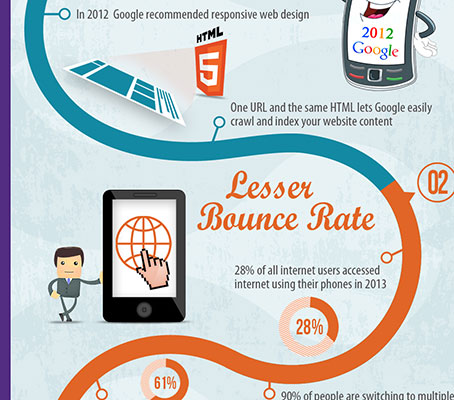The Development Of Internet Site Design: From Past To Existing
The Development Of Internet Site Design: From Past To Existing
Blog Article
Short Article Composed By-Rasmussen Hejlesen
In the past, sites were easy and concentrated on info. Navigating was direct, and design was for desktops. Currently, user experience is essential. Data overviews layouts for simple navigating. Receptive formats fit various devices. Today, dark setting lowers pressure, and minimal menus enhance navigating. Interactive features involve individuals, and bold visuals stand out. AI combination boosts engagement. See how layout has actually progressed to boost your on-line trip.
Early Days of Web Design
In the very early days of website design, simpleness preponderated. Sites were basic, with limited shades, typefaces, and designs. The focus got on giving information rather than flashy visuals. Users accessed the internet via sluggish dial-up connections, so speed and capability were crucial.
Navigation food selections were straightforward, typically located at the top or side of the web page. Sites were made for computer, as mobile surfing had not been yet common. Content was king, and developers prioritized very easy readability over complex layout aspects.
HTML was the key coding language used, and designers needed to work within its restrictions. Animations and interactive features were marginal compared to today's standards. Internet sites were fixed, with little dynamic content or individualized customer experiences.
Increase of User-Focused Design
With the development of site design, a shift in the direction of user-focused layout principles has actually ended up being increasingly popular. Today, producing sites that focus on individual experience is crucial for engaging visitors and achieving organization objectives. User-focused style involves comprehending the requirements, preferences, and actions of your target audience to tailor the website's format, content, and features accordingly.
Designers currently carry out complete research, such as individual surveys and use screening, to collect understandings and responses directly from users. This data-driven approach helps in developing instinctive navigation, clear calls-to-action, and visually enticing user interfaces that resonate with visitors. By placing the user at the facility of the layout procedure, web sites can provide a much more tailored and pleasurable experience.
Responsive design has additionally emerged as a vital facet of user-focused layout, making sure that sites are enhanced for numerous devices and display dimensions. This flexibility improves access and use, catering to the varied means customers interact with web sites today. Essentially, https://www.forbes.com/sites/forbescommunicationscouncil/2022/02/18/the-importance-of-digital-marketing-for-finance-companies/ of user-focused style indicates a change in the direction of creating electronic experiences that focus on the demands and assumptions of the end customer.
Modern Trends in Website Design
Check out the latest patterns forming website design today. One noticeable fad is dark mode style, providing a streamlined and contemporary appearance while lowering eye strain in low-light settings. An additional vital trend is minimalist navigating, streamlining menus and improving customer experience by focusing on essential elements. Including micro-interactions, such as animated buttons or scrolling results, can develop a much more appealing and interactive website. Responsive design stays important, making certain seamless user experiences across different devices. Additionally, utilizing bold typography and asymmetrical layouts can include aesthetic passion and accentuate details web content.
Integrating AI innovation, like chatbots for client assistance or personalized recommendations, boosts customer interaction and simplifies procedures. Availability has likewise come to be a substantial fad, with designers focusing on inclusive style techniques to accommodate diverse individual requirements. Accepting sustainability by enhancing internet site performance for speed and effectiveness is one more arising pattern in website design. Working together with individual feedback and information analytics to repeat and enhance style continuously is necessary for staying pertinent in the ever-evolving digital landscape. By welcoming these contemporary trends, you can produce a visually appealing, straightforward website that reverberates with your audience.
Verdict
As you assess the development of internet site design from the very early days to now, you can see exactly how user-focused layout has come to be the driving pressure behind contemporary fads.
Welcome the journey of change and adaptation in website design, constantly maintaining the user experience at the forefront.
Keep existing with the latest fads and innovations, and never stop developing your approach to produce visually magnificent and straightforward sites.
Develop, adapt, and create - the future of web design is in your hands.
